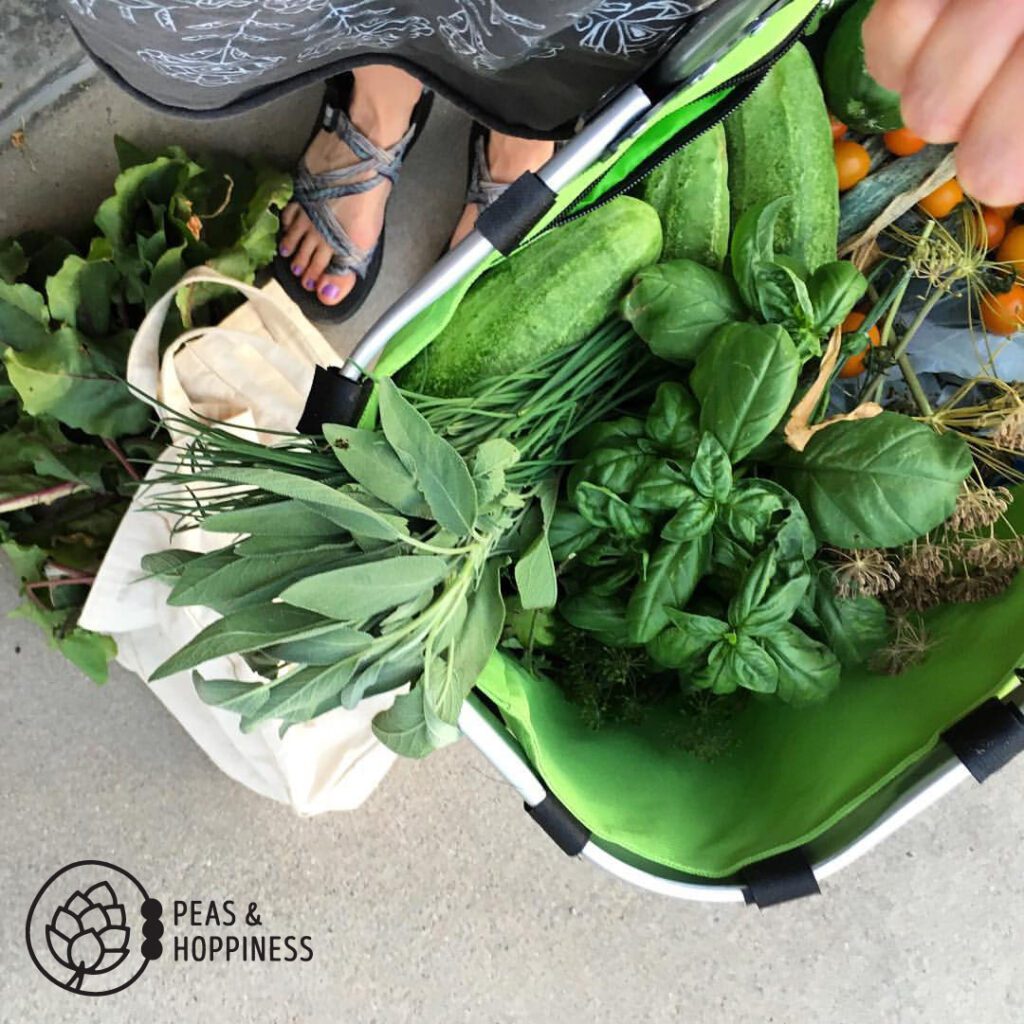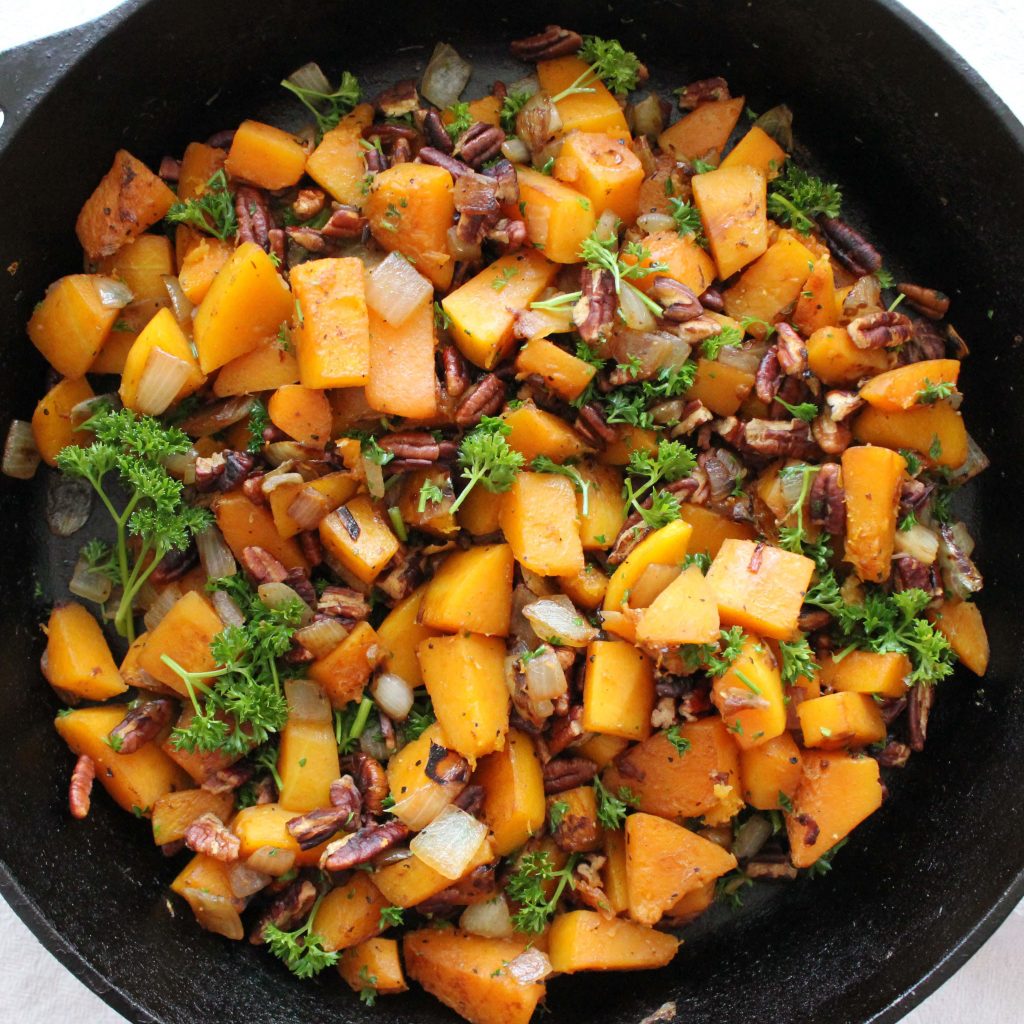Onions are a nutritious winter and fall seasonal vegetable. Learn about varieties of onions, how to prepare them, and why onions make you cry.
Although you might think of onions as a component of a meal rather than a side dish, this year-round vegetable offers a lot of nutrition and flavor!
Learn how to store onions, prepare them for various recipes, and discover their unique nutritional content.
They might make you cry when you cut them, but onions are great for your health – I promise!

There’s a lot of info here – jump to the section you’re interested in:
How to Choose the Perfect Onion
Look for dry onions which are firm and without damage. They should have little to no scent. Avoid onions with dents or cracks in the outer peel, as these will cause it the onion to spoil more quickly.
The size of the onion doesn’t affect the taste or quality, so choose the size needed in the recipe.
What are the Differences Between Different Colors of Onions?
Different onion colors indicate different varieties. Each has a different taste and texture. They will perform differently in different recipes. Choose the onion type based on your need.
Red Onions
Red onions are best served raw in a cold salad or used as a topping. They have a peppery, spicy flavor. Generally red onions are more pungent than sweet onions but milder than others. When cooked, red onions lose some of their color.
Sweet Onions
Sweet onions are the best choice for cooked dishes where onions are a prominent flavor, such as French Onion Soup. They’re a good substitute for yellow onions. Avoid overcooking, as sweet onions can become stringy if cooked too long.
Brand names of sweet onions include Vidalia, Walla Walla, and Maui onions.
White Onions
White onions are very crisp because of their high water content. They’re good for use in raw dishes, especially in Mexican cuisine. White onions have more of a bite than yellow or sweet onions but not as much of an aftertaste.
Yellow Onions
Yellow onions are a good all-purpose onion. When in doubt about which onion to use, choose a yellow onion.
Their flavor is sharp when raw but mellows with cooking while keeping their complex flavor. This is the best onion to use when caramelizing, such as for this Green Bean Casserole or Mujadara.

Nutritional Benefits of Onions
Onions are an incredibly nutritious vegetable. Because they store for a long time, they’re a great option to include in cooking in the winter months.
Vitamins & Minerals in Onions
Onions are high in Vitamin C and Folic Acid. Onions contain a small amount of calcium and iron.
Antioxidants in Onions
Onions are high in an antioxidant called quercetin. This nutrient is also found in tea and apples, but is much better absorbed from onions.
Studies have found links between high onion consumption and reduced risks of colorectal and breast cancer. They also prevent the grown of the bacterium H. Pylori and so reduce the risk of gastric ulcers (source).
Macronutrients in Onions (Carbs, Protein, and Fat Content)
Like other non-starchy vegetables, onions are low in total carbohydrates but contain a significant amount of dietary fiber. They have minimal protein content, are low in calories, and are fat-free.
When are Onions in Season?
Onions are harvested in the fall, but are available year-round due to their ability to be stored for a long time.
Green onions – sometimes called spring onions – are harvested in the springtime. These are more perishable and need to be used within 1-2 weeks of harvest.
How to Store Onions
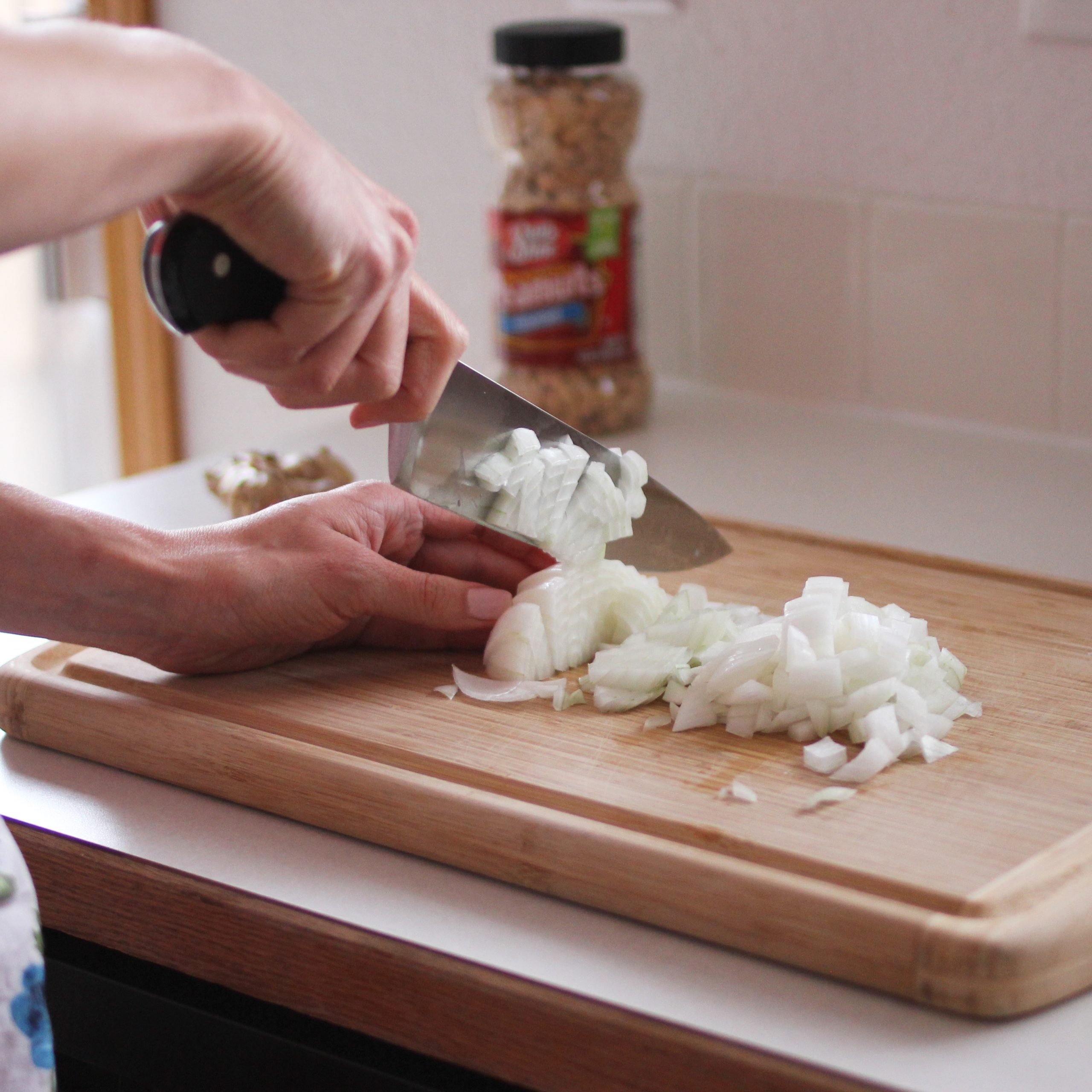 Keep onions in a cool, dry, dark place; warmth and moisture can cause them to get too excited and start to sprout. Room temperature is preferred; whole onions should not be stored in refrigerator.
Keep onions in a cool, dry, dark place; warmth and moisture can cause them to get too excited and start to sprout. Room temperature is preferred; whole onions should not be stored in refrigerator.
Avoid storing onions in plastic and instead store them loose in a box or in a breathable sack. Store onions apart from other fruits and vegetables to prevent their pungent smell and flavor to transfer to them.
When stored properly, onions can last up to a year. Once cut, store in an airtight container in refrigerator up to about a week.
Slimy layers indicate spoilage; black powder indicates mold. Discard the onion if it has sprouted and is very squishy or if the slimy layers are to his very core.
How to Prepare Onions
To prepare an onion, trim top and base off onion, then peel and discard tough outer layers, usually top one to two layers. If there is damage, cut these parts and discard, or discard extra layers until there isn’t any slime.
Slice in half lengthwise and lay onion with the cut (flat) side face down on cutting board. Cut the onion into thin wedges, about 1/4 inch thick. Leave as slices or turn the sliced onion a quarter turn and cut perpendicular slices to dice.
Why do Onions Make you Cry?
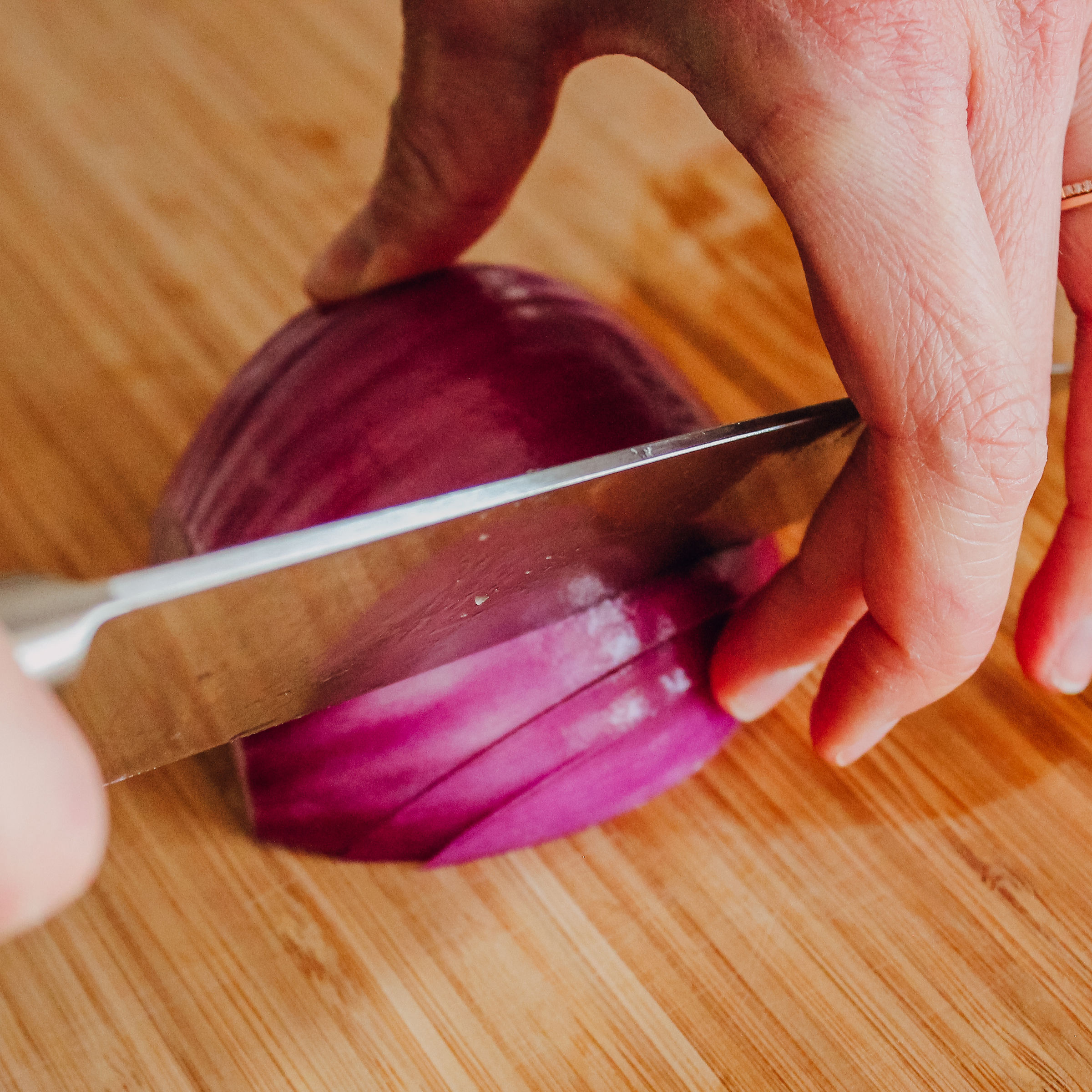 When onions are grown in soil containing a lot of sulfur, they absorb it and form it into their amino acids (the building blocks of proteins).
When onions are grown in soil containing a lot of sulfur, they absorb it and form it into their amino acids (the building blocks of proteins).
If the onion’s cell walls are broken, like when it’s cut or sliced, those amino acids meet up with enzymes. They break down and rearrange the sulfur molecules into a chemical called syn-propranethial-s-oxide. This is the chemical which causes irritation to the eyes.
How do you avoid tearing up when you cut an onion? While there isn’t universal consensus, here are two options:
The first options is to put the onion in the freezer before slicing. Some of the cell walls will burst when the liquid inside freezes them, so they’ll release Syn-Propanethial-S-Oxide before you get to cooking them in the kitchen.
Option two is to wear onion goggles (yes, they’re real).
Best Ways to Eat Onions
Different types of onions work best in different types of dishes. Tame the flavor of any raw onion by slicing thinly and soaking in water.
Red onions pair well with strong-flavored greens, such as kale or arugula. Use sweet onions in salad, in relish, or as a garnish, like on this Baked Falafel.
Yellow onions work best for caramelizing. Try them in this Mujadara or Green Bean Casserole.
Green onions are perfect for a fresh salad when you don’t want too strong of a flavor, such as this Strawberry Mango Spinach Salad.
Best Onion Recipes
For more onion recipes and other ways to use your seasonal produce, click here to start a free trial of the Peas & Hoppy Meal Guides app.
Every week you’ll get a new meal plan with 10 fresh meal ideas in the app. It includes options for breakfast, lunch, dinner, and snacks – all planned around what produce is in season.
Add or delete recipes from your Peas & Hoppy Meal Guide to make it your own every week. All customizations automatically update the made-for-you grocery list. Save time, money, and stress – and enjoy having dinner planned for you!
Start your free trial of the meal planning app and get instant access to your first meal plan.
Do you have other favorite ways to enjoy onions? Share your best onion tips in the comments below!
Happy onion eating,
Dietitian Ann from Peas and Hoppiness
Which Vegetables are in Season?
Grab this free Guide to Seasonal Vegetables so you know which are the best-tasting, most nutritious vegetables all year long!
Take the Guesswork out of Mealtime
Bring your family together around the table with the healthy and delicious Peas & Hoppy Meal Guides.
Weekly menus are customizable, include your shopping list, and feature plant-forward, seasonal recipes so you can use produce from your local farmers. Start today for just $14.99 a month!
“We’ve had better meals in the last three weeks than most of the meals at our regular restaurants.”
-J.H., about the Peas & Hoppy Meal Guides
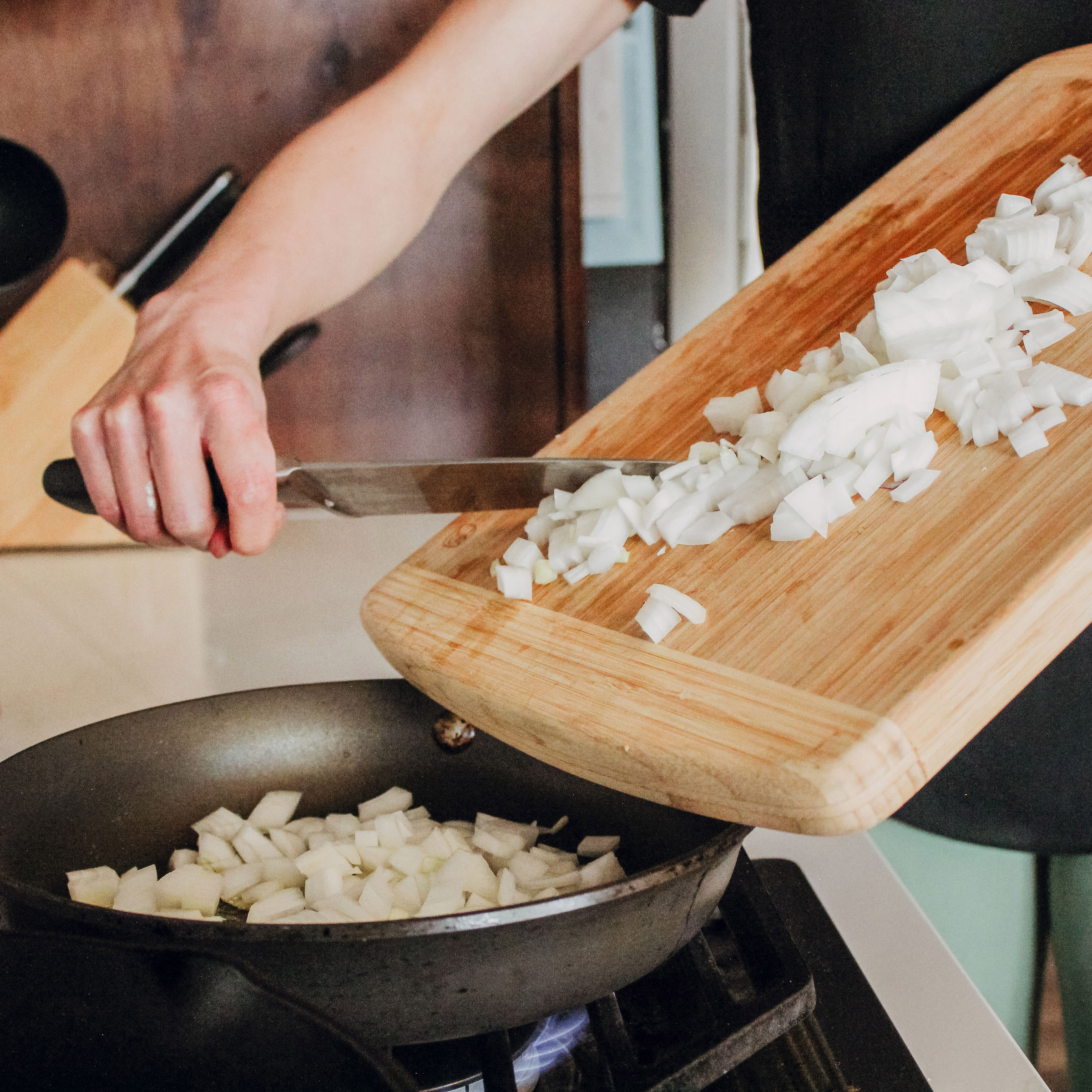 How to Choose the Perfect Onion
How to Choose the Perfect Onion
